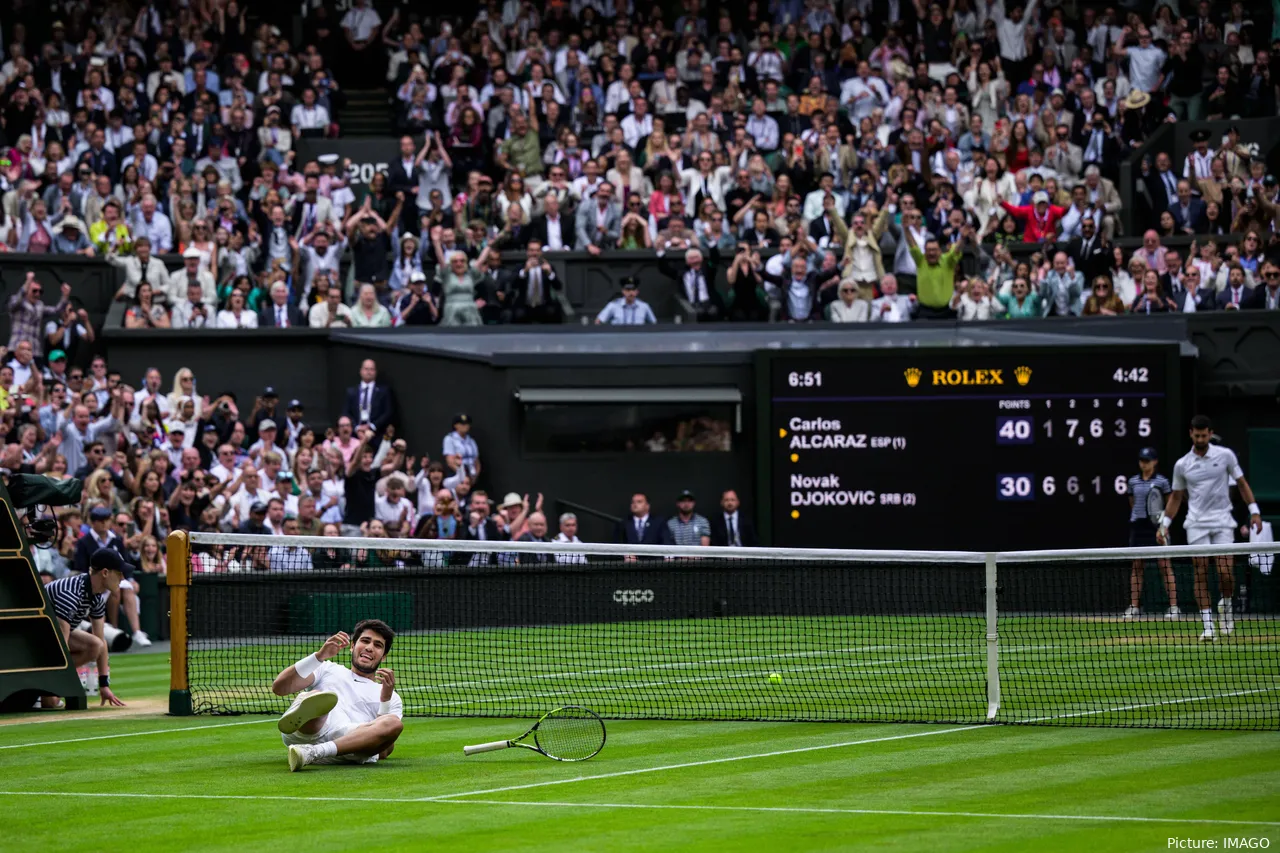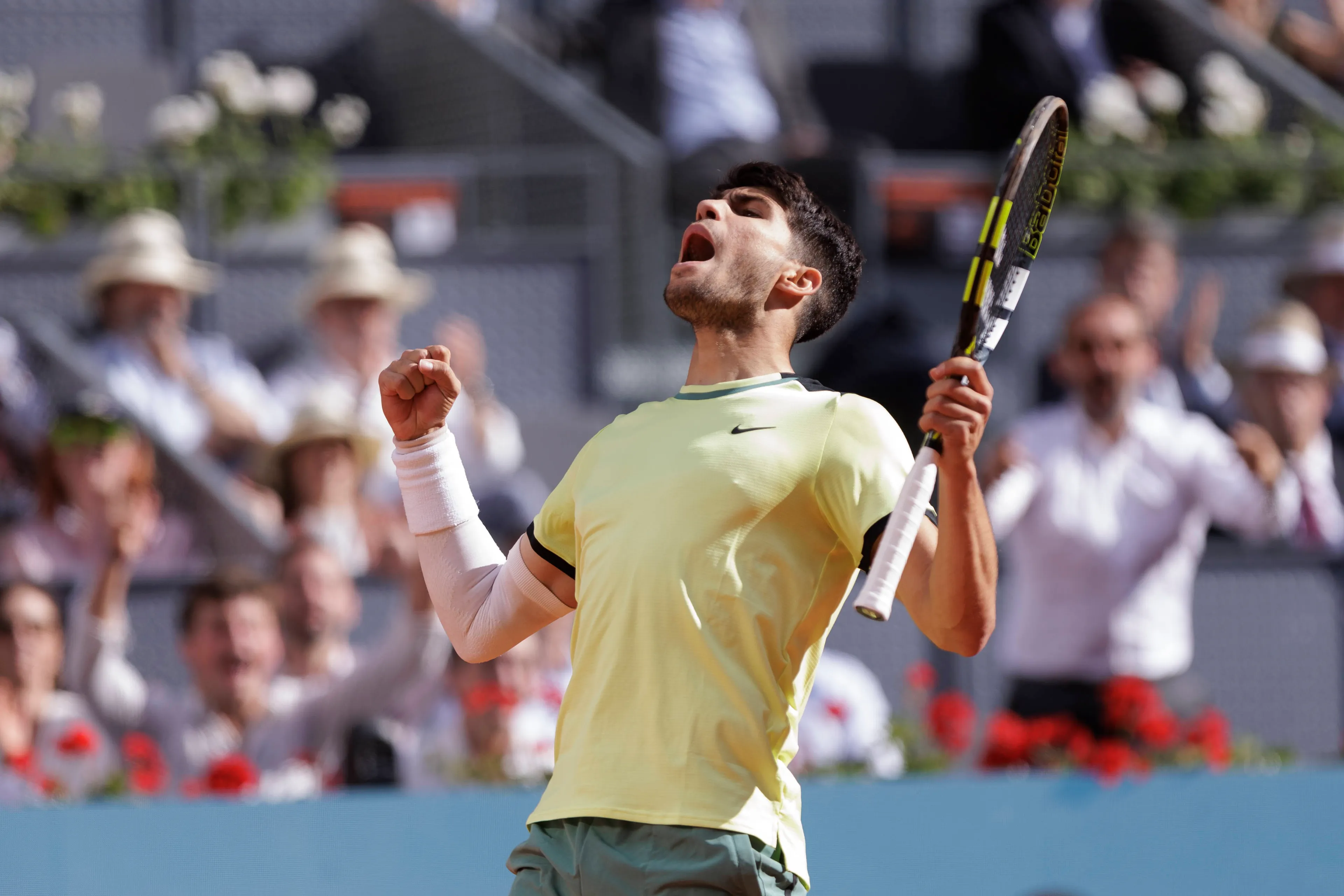ANALYSIS: Wimbledon’s Expansion - A Grand Slam vision facing local opposition
ATPMonday, 07 October 2024 at 13:00

Wimbledon has long been synonymous with tradition, prestige, and the highest calibre of tennis. The annual Championships held at Wimbledon remain the crown jewel of the tennis calendar, drawing global attention and showcasing the sport's finest athletes. In July 2024, the tennis world witnessed Carlos Alcaraz successfully defend his Wimbledon men's singles title, defeating Novak Djokovic with a superb display, while Barbora Krejcikova claimed victory in the women's singles final.
Nearly three months on from the competition, the All England Club is preparing for a major transformation. The approved plans to expand the grounds by building 39 new tennis courts have sparked debates about Wimbledon’s future.
While the development aims to elevate the tournament, ensuring its status as one of the four Grand Slams, the expansion has also drawn significant opposition from local groups concerned about environmental damage. This project is part of a broader effort to secure Wimbledon’s long-term future amidst growing competition from other major tournaments and evolving global sporting expectations.
Read also
The Need for Expansion
For Wimbledon to remain competitive with the other three Grand Slams, the Australian Open, Roland Garros, and the US Open, modernizing its facilities is essential. The approved expansion will see the All England Club expand from its current 41 hectares to a sprawling 115 hectares, encompassing the former Wimbledon Park Golf Course.
One of the most significant changes that will come with this expansion is the relocation of Wimbledon qualifying rounds. At present, qualifying takes place over 3 miles away at Roehampton’s Community Sports Centre, a venue that can accommodate only around 2,000 spectators each day. In comparison, all three other Grand Slam tournaments hold their qualifying events on-site. Bringing qualifying matches to the main Wimbledon grounds ensures that the tournament will no longer be an outlier, and fans will be able to witness all phases of the competition in one location. With this expansion, around 50,000 fans will be able to enter the grounds daily during the two-week tournament, which will significantly increase capacity.

Barbora Krejcikova was crowned women's champion this year.
Moreover, Wimbledon is frequently affected by unpredictable British weather, and the new expansion aims to combat this. The construction of a new court with a retractable roof will guarantee that matches continue without interruptions, further aligning Wimbledon with the advancements seen at the Australian Open and US Open, both of which have invested in roofing technology in recent years.
Beyond qualifying and infrastructure improvements, the expansion will also feature an 8,000-seat show court and 38 additional courts, a move aimed at maintaining Wimbledon's elite status. The Deputy Mayor of London, Jules Pipe, has emphasized the importance of the expansion for Wimbledon’s future. He believes that this project is crucial to ensure the tournament remains competitive and relevant, particularly in an era when international sporting events are constantly evolving and expanding.
The Historical Significance of Wimbledon
Wimbledon’s status as the oldest tennis tournament in the world, dating back to 1877, is one of the reasons it holds such a revered place in the sporting world. It is the only Grand Slam played on grass courts, which adds to its uniqueness, but also presents challenges. Grass courts can be difficult to maintain, and Wimbledon’s iconic lawns must be kept in top condition to deliver the high-quality tennis that fans expect.
However, as the tournament continues to evolve, Wimbledon must walk a fine line between honouring its heritage and embracing the modern era. Other Grand Slams have already expanded and upgraded their facilities to cater to growing crowds and higher expectations. The Australian Open, for example, has undergone significant transformations over the last decade, building state-of-the-art facilities that include multiple retractable roof courts, an increased number of practice courts, and better access for fans. Wimbledon now faces a similar challenge in balancing tradition with progress, a dilemma that all historic sporting venues must eventually confront.
Environmental concerns and London’s parkland debate
While the expansion project has received the green light, it hasn’t come without significant local opposition. Groups such as "Save Wimbledon Park" have voiced strong concerns over the environmental impact of the development. Their petition, which has gained over 20,000 signatures, outlines fears of increased traffic, damage to air quality and the potential loss of wildlife habitats. The development will also see the removal of around 300 trees, further inflaming concerns about the environmental consequences of the expansion.
One of the key worries for local residents is that Wimbledon, already a major draw for tourists, will become even more congested during the Championship weeks. With more people entering the grounds due to the expanded capacity, the local area could face crowding issues, putting additional strain on infrastructure and services.
This debate mirrors a broader problem in London and across the UK: the challenge of building on protected parkland. London’s green spaces are a vital part of the city’s ecosystem, and development on these lands often triggers backlash from conservationists and residents alike. The fear is that once development begins on one piece of protected land, it sets a dangerous precedent for future projects, leading to further erosion of green spaces that are vital to both wildlife and the mental well-being of city dwellers.
Read also
To counterbalance the environmental concerns, the All England Club has included a number of initiatives in its expansion plans designed to protect the park and enhance public access. A new 23-acre public park will be created as part of the development, which will be open to the public year-round, except during the weeks of the Championships. The design of this park will draw inspiration from the original landscaping work of Lancelot "Capability" Brown, an 18th-century British landscape architect known for his grand, sweeping designs that aimed to harmonize man-made structures with natural beauty.
Wimbledon’s expansion will also allow local residents access to at least seven of the new grass courts in the weeks following the Championships, providing opportunities for the community to engage with the sport in a way that has previously been limited to professionals. By providing these courts, the All England Club hopes to inspire future generations of tennis players while offering locals a tangible benefit from the expansion.
Roland Garros Expansion
Wimbledon’s situation bears similarities to the controversial expansion of Roland Garros, home of the French Open, which also faced local opposition. In 2011, Roland Garros initiated a significant expansion that saw the construction of new courts and the renovation of existing facilities. Like Wimbledon, the French Open faced resistance from environmental groups concerned about the impact on the historic Serres d’Auteuil gardens. The French Tennis Federation, however, successfully argued that modernisation was necessary to keep the tournament competitive with the other Grand Slams. The expansion went ahead, allowing the French Open to host larger crowds and provide improved facilities, including a new retractable roof.
Wimbledon now faces a similar battle to ensure that its expansion proceeds while addressing concerns about the environmental and community impacts. Just as Roland Garros overcame opposition to modernise and improve its facilities, Wimbledon’s expansion could secure its place as a top-tier sporting event for decades to come, provided it can strike the right balance between progress and preservation.

Alcaraz winning Wimbledon could become a familiar sight under new plans.
Looking ahead
As Wimbledon embarks on this major expansion, it is clear that the All England Lawn Tennis Club is thinking long-term, aiming to enhance the fan experience, modernise its facilities, and maintain its place as one of the world’s most prestigious sporting events. Yet, the project will also need to navigate environmental concerns, local opposition, and London’s broader challenge of preserving green spaces.
Wimbledon’s expansion offers an opportunity to continue evolving while remaining faithful to its storied past. But only time will tell if the plan succeeds in striking the delicate balance between tradition, modernization, and sustainability. The future of Wimbledon, much like its grass courts, depends on careful maintenance, thoughtful planning, and a vision that respects the past while embracing the future.
claps 0visitors 0
Just In
Popular News
Latest Comments
- Keep avoiding anti-Social Media, do your best to ignore loser sports writer's questions, and just do your own thing.
 mandoist24-04-2025
mandoist24-04-2025 - Let's face it, Saba is not the sharpest tool in the tool shed. Her sarcasm / passive agressive nonsense has always been annoying. Granted, attempting humor in another language is tough but she truly sucks at it.
 mandoist24-04-2025
mandoist24-04-2025 - Well, that was ... all about nothing. Every excuse and future workout plan mentioned should have been dealt with a long time ago. R.I.P., Mark Petchey.
 mandoist22-04-2025
mandoist22-04-2025 - I hope Marion Bley is the Chair Ump for the Final. It would be Karma Served for Saba after her disrespectful 'performance' in the semi.
 mandoist21-04-2025
mandoist21-04-2025 - Coco needs to stop the Williams Hero Worship and play like 'Coco'.
 mandoist19-04-2025
mandoist19-04-2025 - Didn't expect issues between these two...SakkariFan2318-04-2025
- Send her a crate of deodorant DoveSakkariFan2318-04-2025
- Good to see, hopefully Sakkari can return to the form she deserves.SakkariFan2318-04-2025
- Shame no play on Friday but some line-up incoming..SakkariFan2318-04-2025
- Zverev's reaction lacked a bit of class this time around. He handled it better in Australia.MrAndreeva18-04-2025








